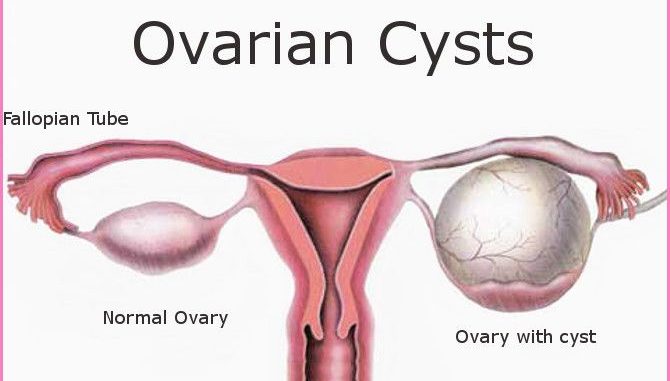
Ovarian cysts are fluid filled sacs inside the ovary. “Large” or “Pathological Cysts” can occur in about 5% of women during their reproductive years. Ovarian cysts are common, frequently asymptomatic and often resolve spontaneously.
Common Symptoms
- Often asymptomatic
- Mild menstrual irregularities & vague pelvic pain
- Low abdominal swelling
- Pain in case torsion, rupture or haemorrhage occurs
- Amenorrhoea (no menses), obesity and Hirusutism (hair growth on abnormal body parts) may be the presenting picture
- Occasional Dyspareunia (pain during sexual intercourse) may also be present
Causes
Follicular Cyst: This results from growth of a Follicle. A Follicle is the normal fluid-filled sac that contains an egg. Folicular cysts form when the Follicle grows larger than normal during the menstrual cycle and does not open to release the egg. Usually, Follicular Cysts resolve spontaneously over the course of days to months.
Luteum Cyst: The Corpus Luteum is an area of tissue within the ovary that occurs after an egg has been released from a Follicle. If a pregnancy doesn’t occur, the Corpus Luteum usually breaks down and disappears. It may, however, fill with fluid or blood that persist as a Cyst on the ovary. Usually, this Cyst is found on only one side, produces no symptoms and resolves spontaneously.
Endometriosis is a condition in which cells that normally grow inside as a lining of the uterus (womb) instead grow outside of the uterus in other locations. When Endometriosis involves the ovary, the area of the endometrial tissue may grow and bleed over time, forming a blood filled Cyst.
Polycystic Ovarian Syndrome (PCOS): The condition known as Polycystic Ovarian syndrome (PCOS) is characterized by the presence of multiple small Cysts within both ovaries. PCOS is associated with a number of hormonal problems and is the most common cause of infertility in women.
Infections of the pelvic organs can involve the ovaries and Fallopian tubes. In severe cases, pus-filled cystic spaces may be present on or around the ovary or tubes. These are known as Tubo-ovarian
- Abscesses.
- Benign Ovarian Tumours: Dermoid or Cystadenoma
- Malignant Ovarian Tumours
Treatment Options
Laparoscopic Ovarian Cystectomy: Laparoscopic Ovarian Cyst excision is the procedure done to treat simple ovarian Cysts. It is a safe procedure and does not need more than one-day stay in the hospital, which is an advantage for young girls.
Laparoscopy Ovarian Drilling: This is done in case of polycystic ovaries where in the multiple Cysts on the surfaces of the ovary are drilled.
Oophorectomy: Removal of the ovary along with the pathological Cyst. This is done when the Cyst is big & involves the whole ovary.
